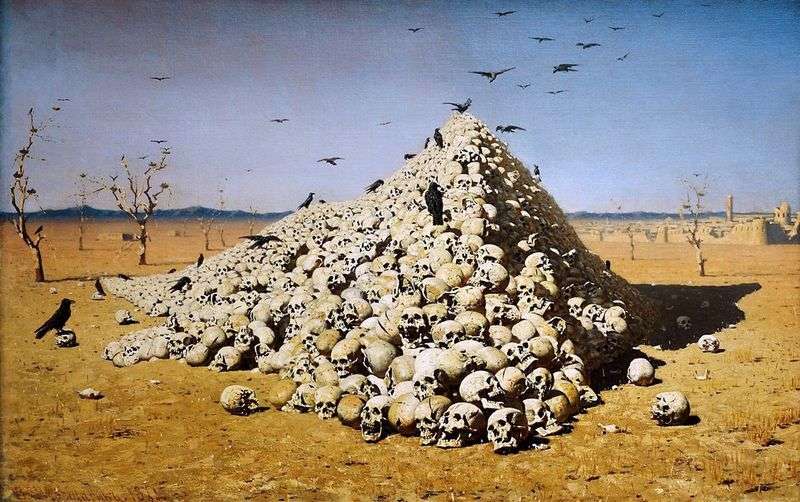
This picture, one of the most famous among the masterpieces of the artist Vereshchagin. The painting was written in 1871, occupies the leading place in the Turkestan cycle of paintings by this artist. At first the artist conceived the idea of drawing Tamerlane, it was his warriors who collected a mountain from the skulls of killed soldiers, but moved away from the historical narrative, giving the canvas a unique story.
On the canvas, we see a pyramid of skulls. Only by turning to history, we can assume that the faithful warriors of Tamerlane collected this pyramid. We see a dead steppe, it is not alive. Around, and on the mountain itself a flock of crows, they flew here in search of the remains of human flesh. Everything tells us about death. The grass is scorched, the trees are charred, the city is destroyed in the background, the traces of the slaughter on the turtles – all this tells us about the destruction.
Contrast the artist made, comparing the yellow, sun dried steppe and bright blue sky. Nothing alive, except scavengers – ravens. Looking at this picture involuntarily you begin to sympathize with people whose skulls are lined up in a pyramid. In my opinion, the artist shows us the ruthlessness of war, calling for peace. He does not address Tamerlane, he addresses us. To humanity.
Vereshchagin shows us that in the war there are no winners and losers, because people from both sides are dying. After all, in order to achieve victory, the soldiers have to fight, and in every battle they kill 5 enemies, lose 2, and maybe 3 soldiers, so there are no losers in the war. Some of the sides may give in and acknowledge their defeat, but this happens on rare occasions. We forget about the humanity and kindness of the people with the onset of war, in the eyes of the soldiers there is no mercy, and therefore we do not consider enemies for people, and after all they are the same people, with their families and customs. I wish everyone to imbue with humanity, to look at this picture and plunge into the world of fantasy.
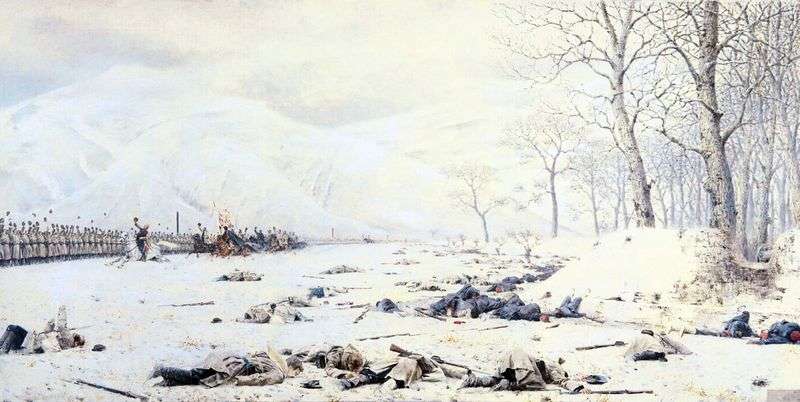 Shipka-Sheinovo. Skobelev under Shipka by Vasily Vereshchagin
Shipka-Sheinovo. Skobelev under Shipka by Vasily Vereshchagin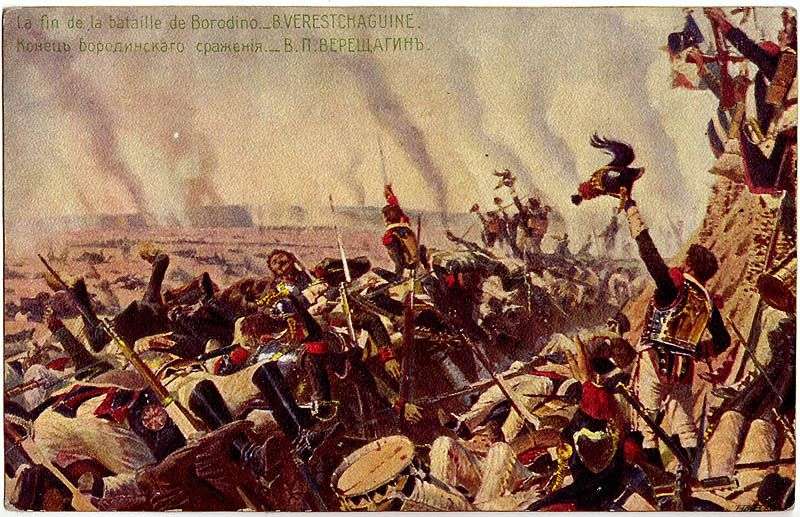 The end of the battle of Borodino by Vasily Vereshchagin
The end of the battle of Borodino by Vasily Vereshchagin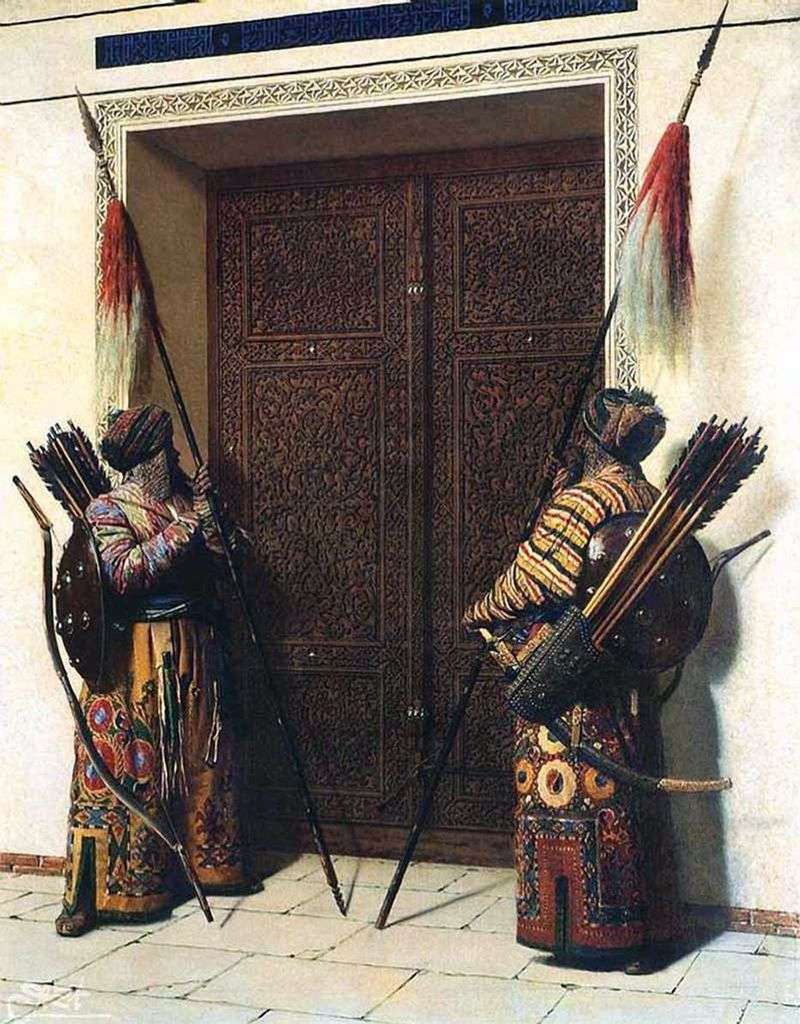 The doors of Timur (Tamerlane) by Vasily Vereshchagin
The doors of Timur (Tamerlane) by Vasily Vereshchagin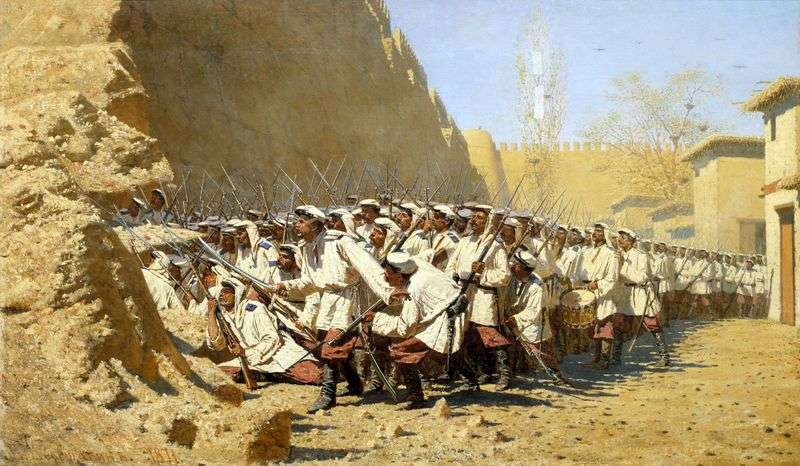 At the fortress wall. Let them come in by Vasily Vereshchagin
At the fortress wall. Let them come in by Vasily Vereshchagin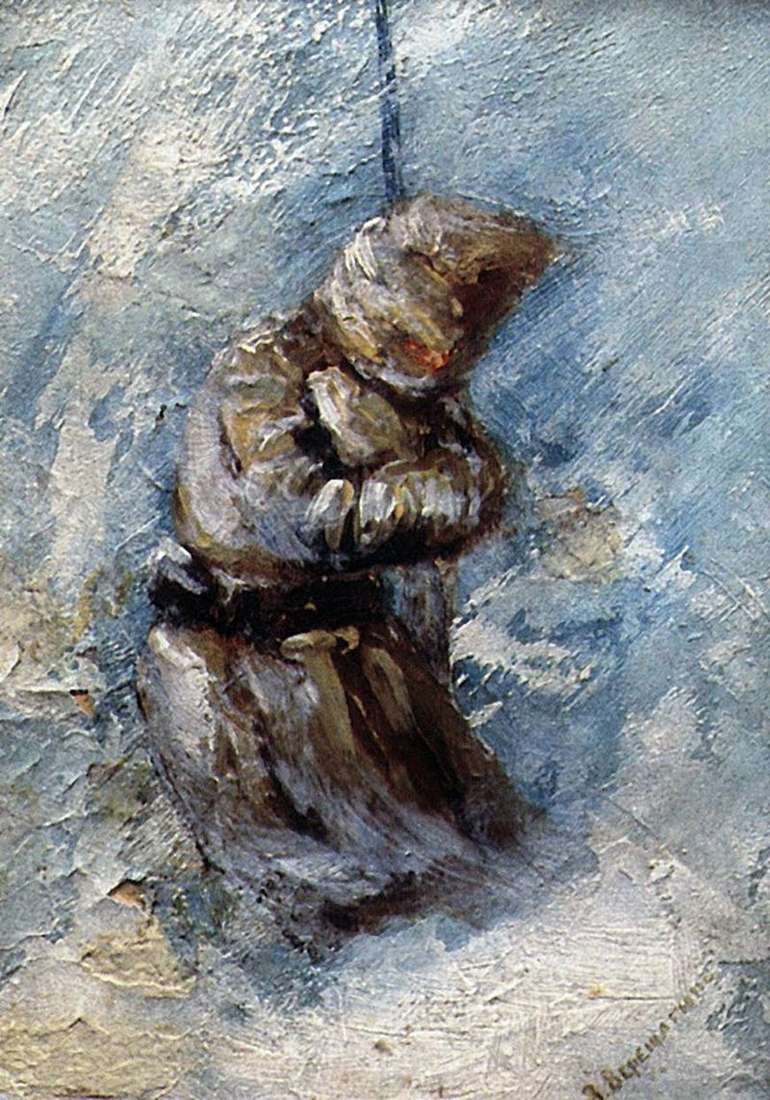 Everything is calm on Shipka! by Vasily Vereshchagin
Everything is calm on Shipka! by Vasily Vereshchagin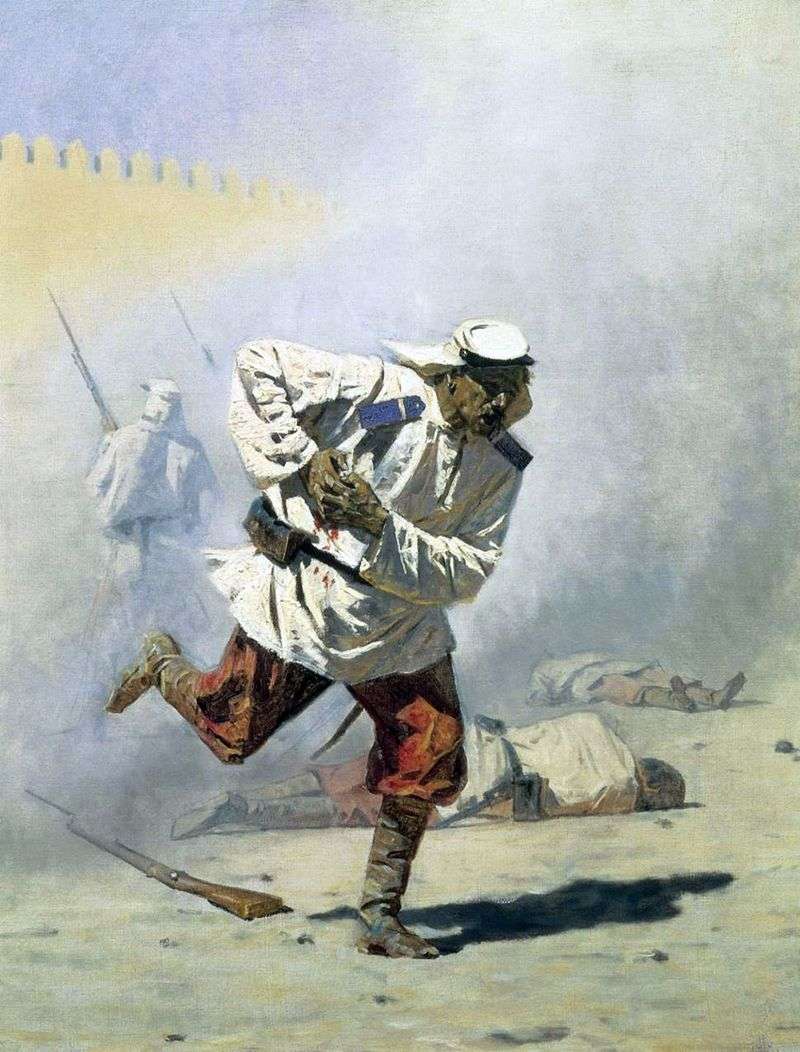 Mortally wounded by Vasily Vereshchagin
Mortally wounded by Vasily Vereshchagin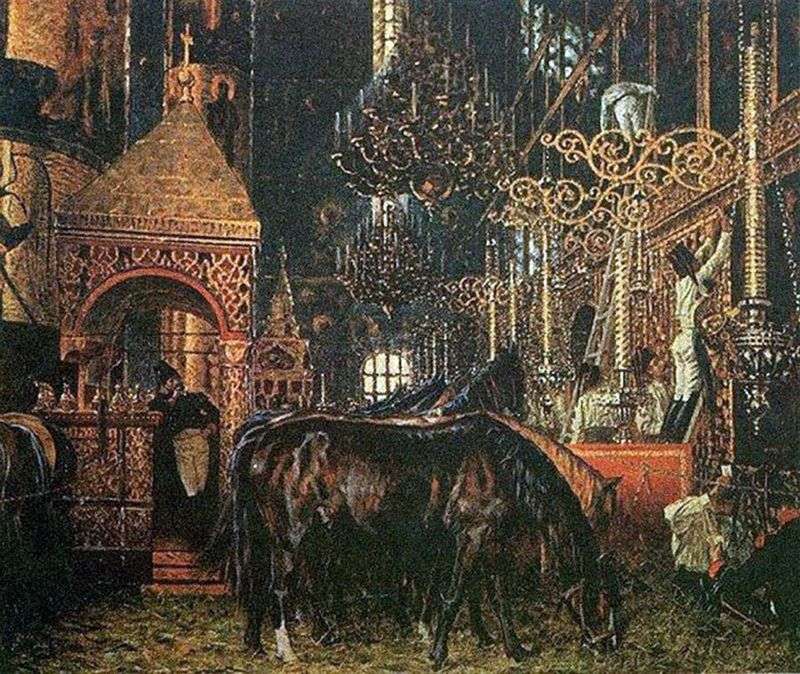 In the Assumption Cathedral by Vasily Vereshchagin
In the Assumption Cathedral by Vasily Vereshchagin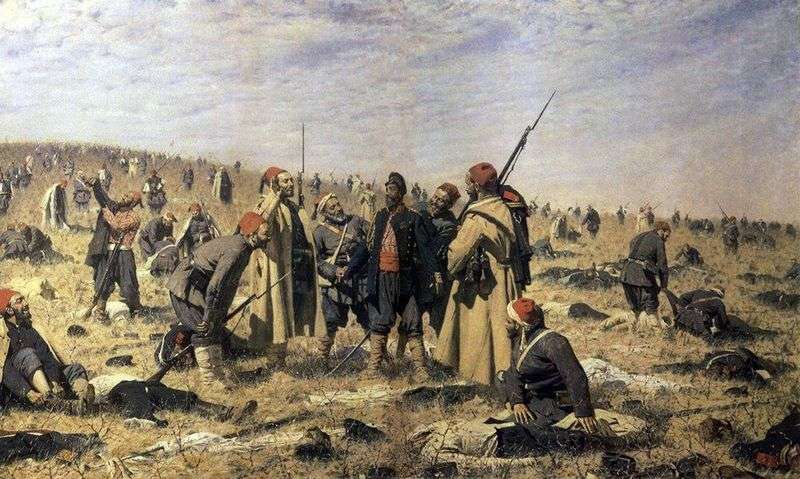 Winners by Vasily Vereshchagin
Winners by Vasily Vereshchagin